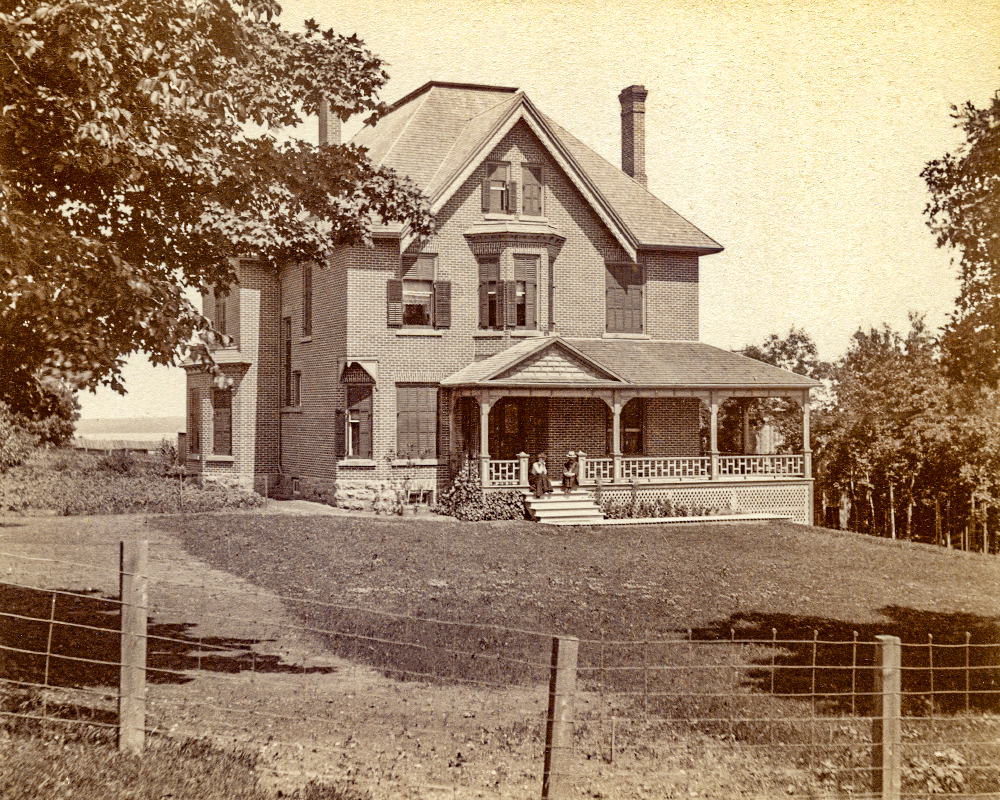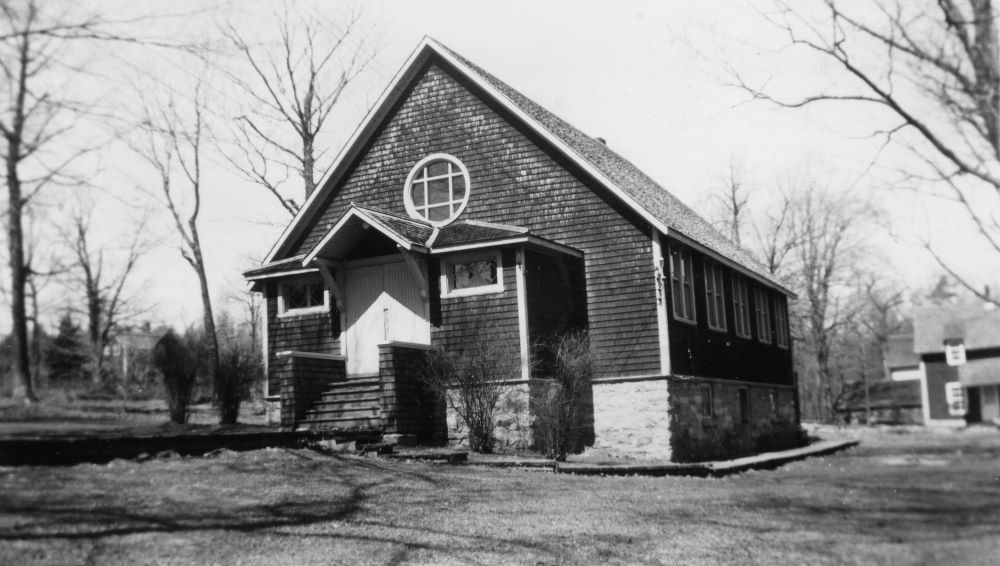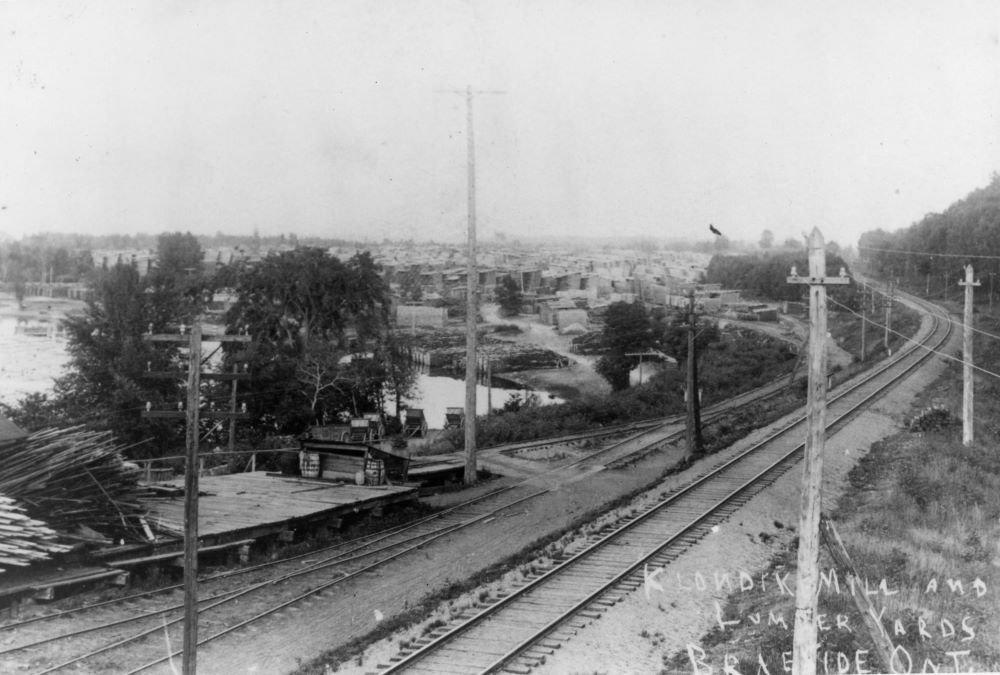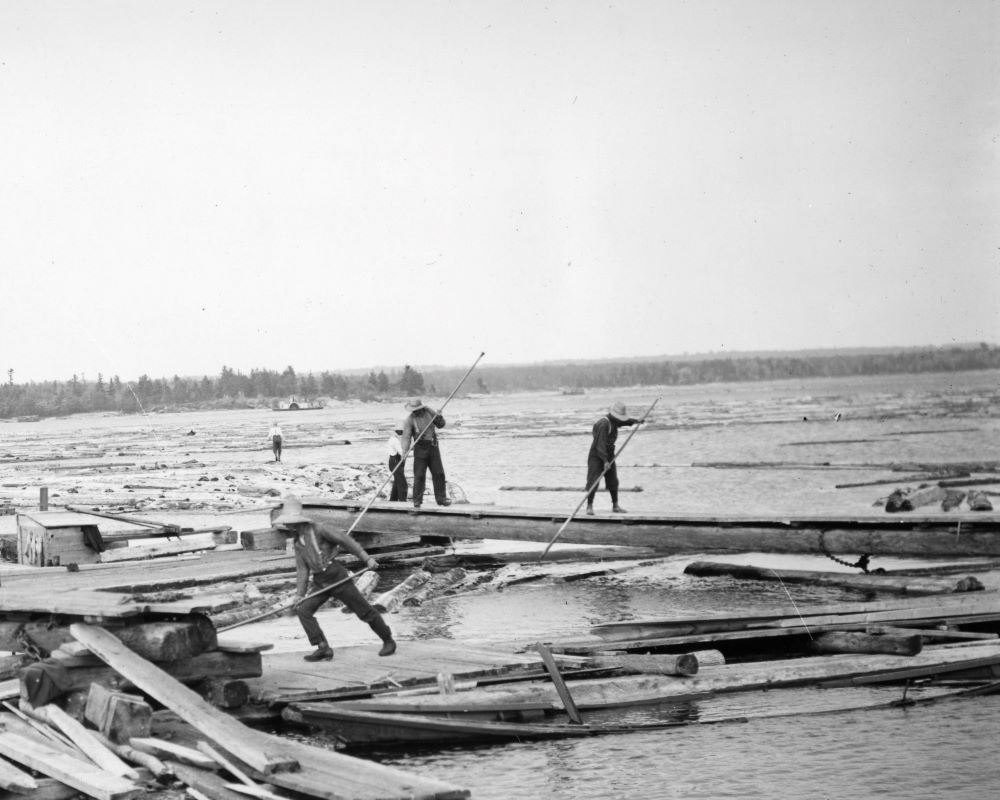Reverend Angus McBain (Braeside Presbyterian Congregation) 1900-1909
Reverend McBain spotted a large heron fishing from the crib in Red Pine Bay on his early morning walk. The bird’s shape was perfectly reflected in the grey, still water. It reminded him of Mr. Macnamara’s rare orchids which the photographer recently discovered near the village.
He passed between the Gillies Bros. office building and the club rooms where men employed in the mill and on the river lived. He heard a lively mix of French and Irish accents in conversation on this fresh Sunday morning.
“How are you Mr. Clarke?” he asked, when he came across the young river driver who had recently joined his flock. “Very well, thank you Reverend. I should start work this week,” he answered with a broad smile. “Well, take care on the boom!” the Reverend replied as he sent up a silent prayer for the young man’s safety.
He noticed Dema and John relaxing on the steps of their new house. Soon, he would see them at services and he tipped his hat in reply to Mr. Gillies’ call of “Good morning, sir!”

John Albert Gillies Jr. and Dema Bliss Gordon Gillies on the steps of their home at Braeside, Ontario. Constructed in 1900, it was later replaced by another house designed for Col. John A. Gillies and his wife Rosamond A. Findley.
He felt blessed to have a lovely new church to preach in. It was covered with cedar shakes manufactured in Gillies’ Klondike Mill. It felt like home.

Built by the Presbyterian congregation in 1902, this church functioned as the United Church from 1925-2016 when it was sold. It is now used as a private residence.
Listen to the audio clip about sorting at the gap with transcription: Interview with Brian Rafter.



